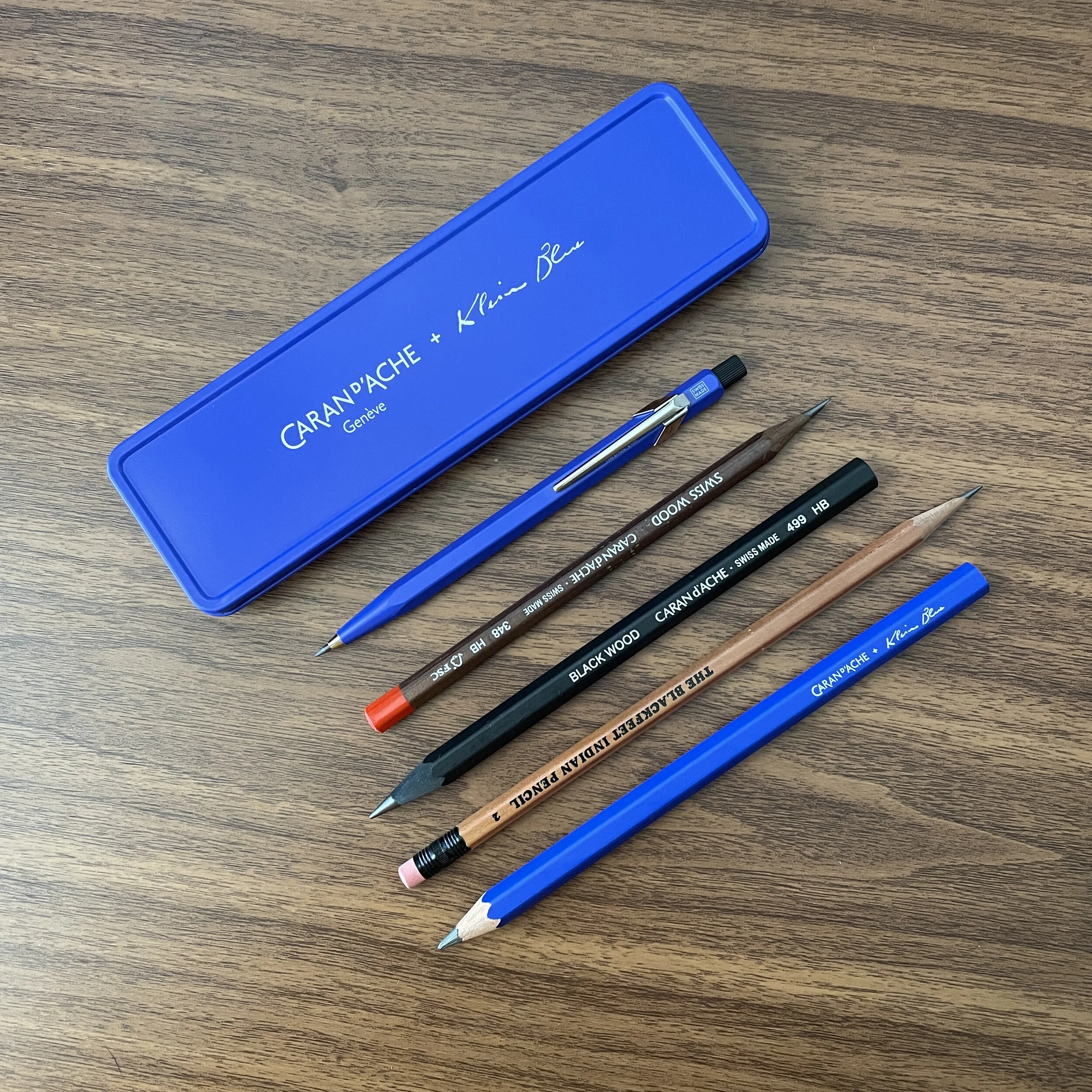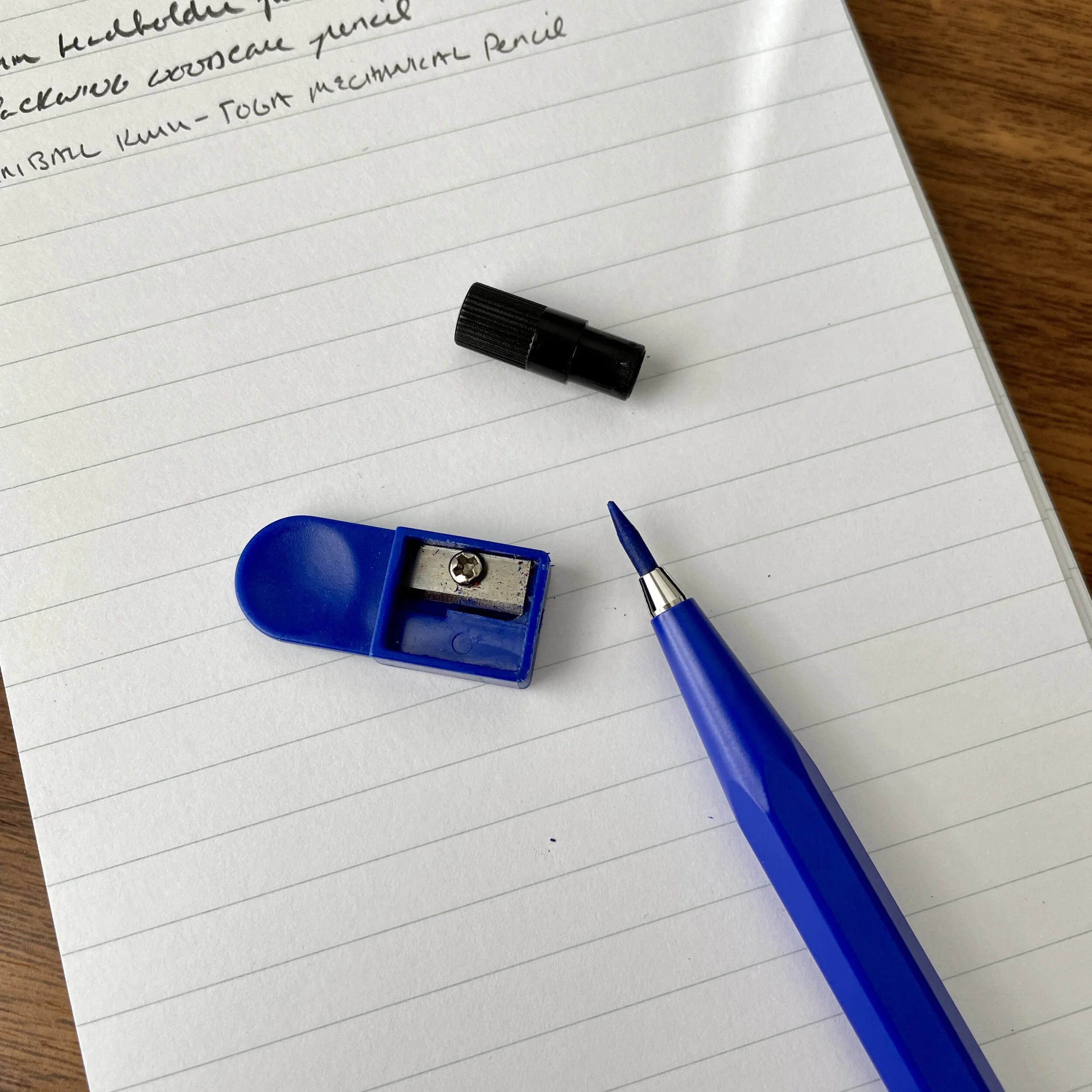In belated celebration of National Pencil Day (which was yesterday), I decided to dig back through my “stationery drawer of shame” and pull out a product that I’ve owned for years but never formally reviewed. (To be honest, there are multiple “drawers of shame.” And cabinets. And storage bins. But we won’t go there.) Close at hand I found a quirky mechanical pencil that struck me as the perfect way to celebrate our appreciation for pencils both woodcase and mechanical: the Ohto Sharp .5mm mechanical pencil.
[Note: Since I didn’t post a review on National Pencil Day, I’m extending the National Pencil Day promotional code until 11:59pm ET tonight. Take 10% off your order of pencils and/or pencil sharpeners in the Curated Shop using the code “PENCILDAY” at checkout!]
Established in 1929, Ohto is a long-standing Japanese stationery brand that is best known for their mechanical pencils, ballpoints, and rollerballs. (Reviews of Ohto fountain pens are best described as, ahem, “mixed.”) While Ohto makes a wide range of different writing instruments, the one that’s repeatedly caught my eye is the Ohto Sharp .5mm pencil, in which the company has hollowed out a traditional woodcase pencil body and inserted a .5mm mechanical pencil mechanism. The knock, (or “clicker”) is inserted into the ferrule and includes a traditional pink eraser. While it does rattle a bit as you write, overall, I was impressed at how well this contraption actually works.
The eraser pops out of the Ohto Sharp, exposing the tube that holds the pencil leads. (You can also purchase replacement erasers.)
So why does this product exist at all? Apart from just being a neat design idea, the Ohto Sharp caters to those who enjoy the feel of a woodcase pencil, but either (1) write very small and don’t enjoy constantly sharpening a pencil to maintain a needle point; and/or (2) prefer their woodcase pencils at a specific length, namely when they’ve been sharpened a handful of times. I fall into both categories, and marveled at how much fun it was to use this pencil to make tiny notes and annotations in a way that you can only really do with a mechanical pencil, yet with the comfort and balance of a hexagonal woodcase pencil at what I consider a great length.
I love woodcase pencils when they are just about this length - probably sharpened 3-5 times, depending on the pencil.
Shown next to a Blackwing Volume 3, which I would estimate has been sharpened approximately 4-5 times.
Takeaways and Where to Buy
I’ve enjoyed the Ohto Sharp, and will probably keep one in my regular pencil rotation, especially when I’m traveling and don’t have a convenient opportunity to use a sharpener. (I was going to say that I plan to pick up another, but while I was writing this review, further digging in the “drawer of shame” revealed another Sharp, still sealed in its packaging, this time in a natural finish!) While I’m set for the .5mm version, there’s also apparently a 2mm leadholder version, which I have not used.
I should mention that the Ohto Sharp is, effectively, a disposable mechanical pencil. While I’ve owned this particular pencil for several years without incident, others have had issues with the Ohto Sharp jamming, and if so, you likely will not be able to disassemble the pencil in order to repair it. This doesn’t bother me too much - priced around $5, it’s not too expensive to replace, and as I mentioned, I’ve used one of my Sharp pencils on and off for about three years without experiencing any problems.
I acquired the pencil featured in this review at Kinokuniya Bookstore in New York, with my own funds, for my own personal use. I was not compensated for this review and this post does not include affiliate links. Ohto products are available online from a variety of retailers, and this is one that I may look to add to the Curated Shop in the future.

